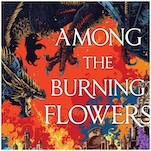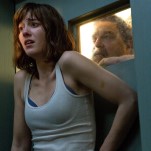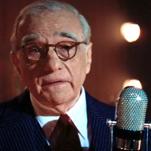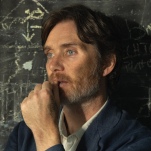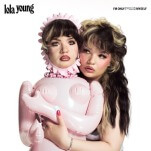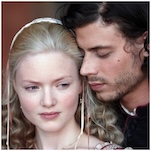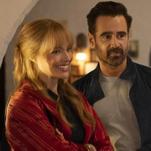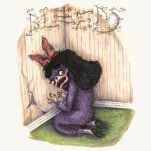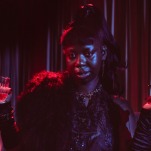The Wheel of Time Fits Perfectly into TV’s Big Fantasy Experiment—But Is That a Good Thing?
Photo Courtesy of Amazon Prime
For nearly a decade, Hollywood has been attempting to recreate the early magic of HBO’s sprawling fantasy epic Game of Thrones, and recently, TV fans have finally started seeing the fruits of this labor. Between His Dark Materials, American Gods, The Witcher, and Shadow and Bone, fantasy is definitely having A Moment. But with the exception of Starz’s adaptation of Outlander—which truthfully is only about 5 percent fantasy and 95 percent historical romance—no series has broken through to the masses or captured the zeitgeist like Thrones did for the better part of the 2010s. And it seems unlikely that the most recent series to join the fantasy fray, Amazon Prime Video’s The Wheel of Time, is going to be the show to do it, either.
Adapted for television by Rafe Judkins from Robert Jordan’s best-selling series of novels, The Wheel of Time is an expansive but fairly traditional entry into the fantasy genre. Set in a world where time is cyclical, magic exists, and only a powerful organization of women known as the Aes Sedai can control it, the show follows Rosamund Pike’s Moiraine, an Aes Sedai who seeks to find the Dragon Reborn, the latest incarnation of the one person destined to fight the Dark One and either save or destroy humanity in the process. The first season finds Moiraine, her protector Lan (Daniel Henney), and five young men and women—one of whom is prophesied to be the Dragon Reborn—as they travel from a small village near the Two Rivers to the safety of the White Tower, the home of the Aes Sedai. Along the way, they encounter numerous obstacles, from grotesque monsters, human agents of the Dark One, and a military-like organization known as the Children of the Light, which seeks to root out anyone with the ability to channel magic (aka the One Power).
It is a subtle twist on the familiar Chosen One narrative that pits good versus evil and puts the fate of the world in as-yet-unidentified hands. But the series is shallow, with little in the way of actual, concentrated world-building; the characters are generic archetypes and the writers do little to explain the mythology that governs this world. At times it feels like we’ve been dropped into a sequel and are expected to understand what’s going on, which is impossible unless you’ve read the dense source material (the series spans 14 novels, a few of which were written by Brandon Sanderson after Jordan’s death). And if you have read the books, you’re bound to find something to dislike as well, since the writers have either changed or trimmed a lot from the novels in order to bring it to TV. While the show gets better as it goes, fans of fantasy hoping to find a series worthy of their time will likely be disappointed, as The Wheel of Time is a lackluster entry to the genre, a halfhearted attempt to capitalize on the recent interest in fantasy. This means, unfortunately, that it’s also par for the course.
For years fantasy shows operated on the fringes, outside of the mainstream. Even when series featuring fantasy elements did find success, they were often relegated to under-watched critical darling (The Magicians, Wynonna Earp) or Tumblr favorite (Shadowhunters, Merlin). Meanwhile, many other series’ strengths were only fully appreciated after they’d concluded (Buffy the Vampire Slayer). But when HBO dared to take fantasy seriously with Thrones, suddenly it was palatable. Suddenly, an entire genre that had been overlooked for years was legitimate in the eyes of the masses. It became cool to watch a sprawling epic set in a wholly original world where dragons existed. Emmy nominations (and wins!) went from delusions of grandeur to a given. But nearly every attempt Hollywood has made to engage in fantasy TV since Game of Thrones has fallen flat, either because it was inaccessible to the casual viewer, had incomplete world-building and/or confusing mythology, or featured lackluster visual effects. (Or, in the case of American Gods, never-ending conflict behind the scenes.)
Even HBO struggled with its next fantasy series, His Dark Materials, which debuted in 2019 just six months after Thrones concluded. Though it is a worthy attempt to bring Philip Pullman’s fan-favorite novels to life on screen (at least, it’s far better than the 2007 film starring Nicole Kidman ever was), it hasn’t found much of an audience outside of those already familiar with its story. With a narrative exploring the dangers of unchecked power and dogmatic belief through a coming-of-age story involving multiple universes, daemons, angels, talking polar bears, and a mysterious particle known as dust, it’s not as accessible to outsiders as Game of Thrones was early on.
It’s easy to forget, but Thrones began modestly and succeeded initially because of interpersonal conflicts, not fantasy elements. Although it would expand in size, scope, and budget as it continued, the show only occasionally deployed the level of magic and fantasy that appear in many programs making their way to TV now. The presence of White Walkers, the Children of the Forest, dragons, and Jon Snow’s (Kit Harington) resurrection all played roles in the overarching narrative of the series, but it wasn’t always that way. It naturally worked out well for HBO, which could claim to have popularized the fantasy genre while also making a fantasy series that only engaged in its core elements for a fraction of its eight-season run. But it’s also made things harder for every show that follows. His Dark Materials, The Witcher, The Wheel of Time and other series that fully immerse viewers in different worlds and feature deeply complex mythologies that rely from the jump on magic, monsters, gods, and various other creatures to tell their stories will never be as universally accessible as a show that only came to lightly engage with its fantasy elements after hooking viewers with promises of battling houses and political intrigue.
Most of these fantasy shows are adaptations of expansive, wide-ranging novels (or series of novels) that deal with similar themes like the balance of light and dark, the battle between good and evil, or the dangers of unchecked power. But their narratives are wrapped up in complex lore that is not always easily translated from page to screen. This is why so many adaptations feel like they’ve been watered down or are only skimming the surface of what’s possible. This was the case for Netflix’s Shadow and Bone, which follows Alina Starkov (Jessie Mei Li), an orphan who discovers she’s Grisha: someone who can use the show’s version of magic known as “small science.” Alina finds that she possesses an ability to control sunlight that will allow her to save her country from the Shadow Fold, an area of oppressive darkness that has divided the country and is home to hideous creatures that feast on human flesh. The series was embraced by viewers unfamiliar with the novels upon which the series is based for creating a compelling new universe. But those who’d experienced Leigh Bardugo’s Grishaverse trilogy on the page felt cheated by the way the show rushed through the story and failed to develop the Grisha as a people. Alina’s deeply complex relationship with the Darkling (Ben Barnes), a man who can control shadow, also felt flattened and underdeveloped. The fact the writers inserted multiple characters from a companion series didn’t help either, as this ate up screen time that could have been better spent developing these areas of concern.
-

-

-

-

-

-

-

-

-

-

-

-

-

-

-

-

-

-

-

-

-

-

-

-

-

-

-

-

-

-

-

-

-

-

-

-

-

-

-

-








